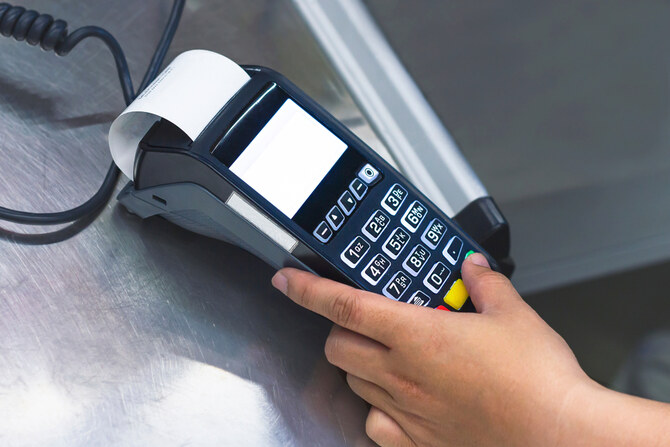RIYADH: Saudi Arabia’s e-commerce sales using Mada cards surged 44.64 percent yearly in January, reaching SR20.87 billion ($5.56 billion), underscoring the Kingdom’s accelerating shift toward digital payments.
Data from the Saudi Central Bank, or SAMA, showed transaction volumes jumped 33.65 percent to 111.42 million, reflecting rising consumer spending and the growing adoption of contactless payment technologies. The figures cover online shopping, in-app purchases, and e-wallet transactions, excluding credit card payments via Visa or MasterCard.
Mada, Saudi Arabia’s national electronic payment network, offers debit and prepaid card services. Utilizing near-field communication technology for contactless payments, it ensures secure transactions at physical retail locations and online.
Mada sales are rising due to the Kingdom’s increasing spending power and widespread adoption of NFC-enabled devices. Dual-income households and a strengthening economy have boosted consumer purchasing, while user-friendly digital payment solutions such as Mada are accelerating the shift toward a cashless society.
E-commerce transactions have also seen significant growth, driven by post-pandemic digital adoption and substantial investments in online platforms, allowing the Kingdom’s payment landscape to evolve rapidly, with Mada cards now accounting for most card transactions.
While Mada continues to drive e-commerce expansion, the broader point-of-sale landscape reveals an even more dynamic trend.
At physical retail outlets, customers have access to several payment options, including Mada, which drove January sales to SR58.21 billion — an 8.19 percent year-on-year increase — while the number of transactions rose 13.10 percent annually.
Data from SAMA showed that spending at restaurants and cafes, as well as beverage and food outlets, accounted for the highest shares, roughly 30 percent in total, amounting to around SR8.7 billion each.
Spending on miscellaneous goods and services, including personal care, supplies, and maintenance made up 12 percent, or SR7.07 billion.
Jewelry sales recorded the highest growth among point-of-sale categories, surging 24.71 percent year on year in January to reach SR1.19 billion. Clothing and footwear spending grew about 14 percent, totaling SR3.68 billion.
The spike could be partly attributed to the new year, when consumers, bolstered by year-end bonuses and festive promotions, tend to refresh their wardrobes and accessories. Retailers further stimulate this trend by launching clearance sales and special offers, likely driving increased spending during January.
The widespread adoption of NFC-enabled devices, mobile payment apps, and integrated digital wallets has significantly streamlined transactions in-store and online.
Backed by modern payment processing systems and a supportive regulatory framework, these technologies are driving higher transaction volumes and enhancing consumer convenience.
























